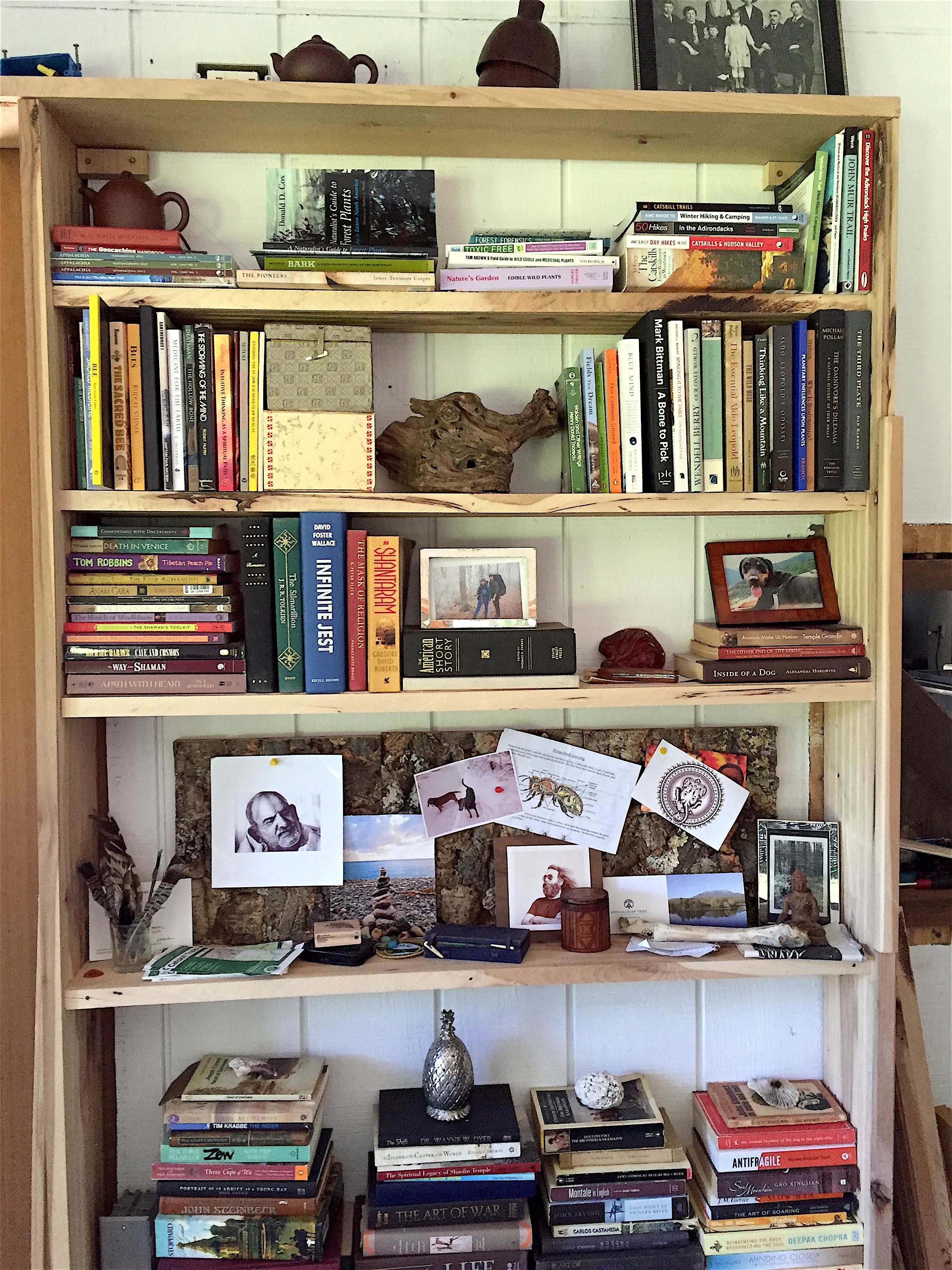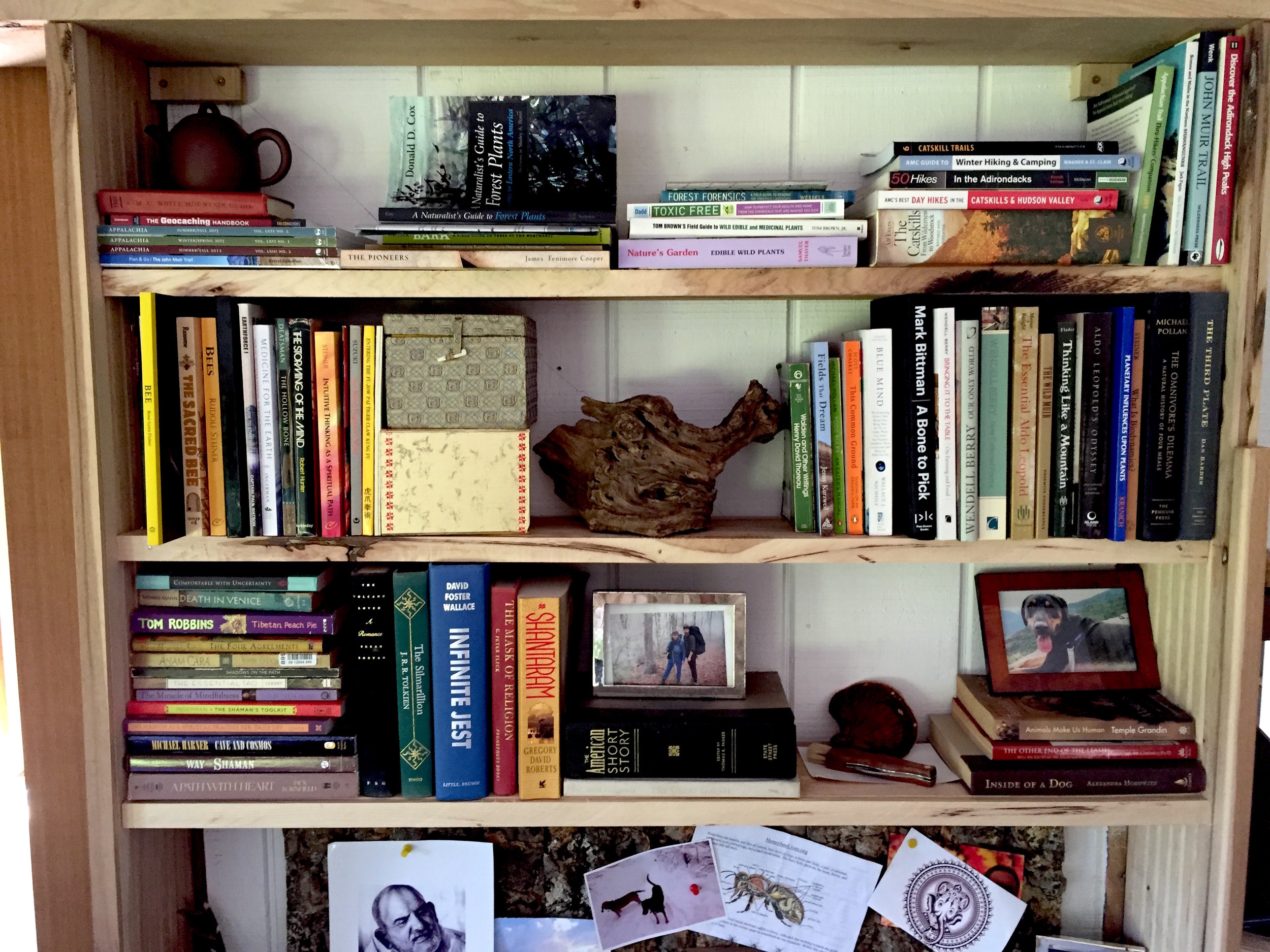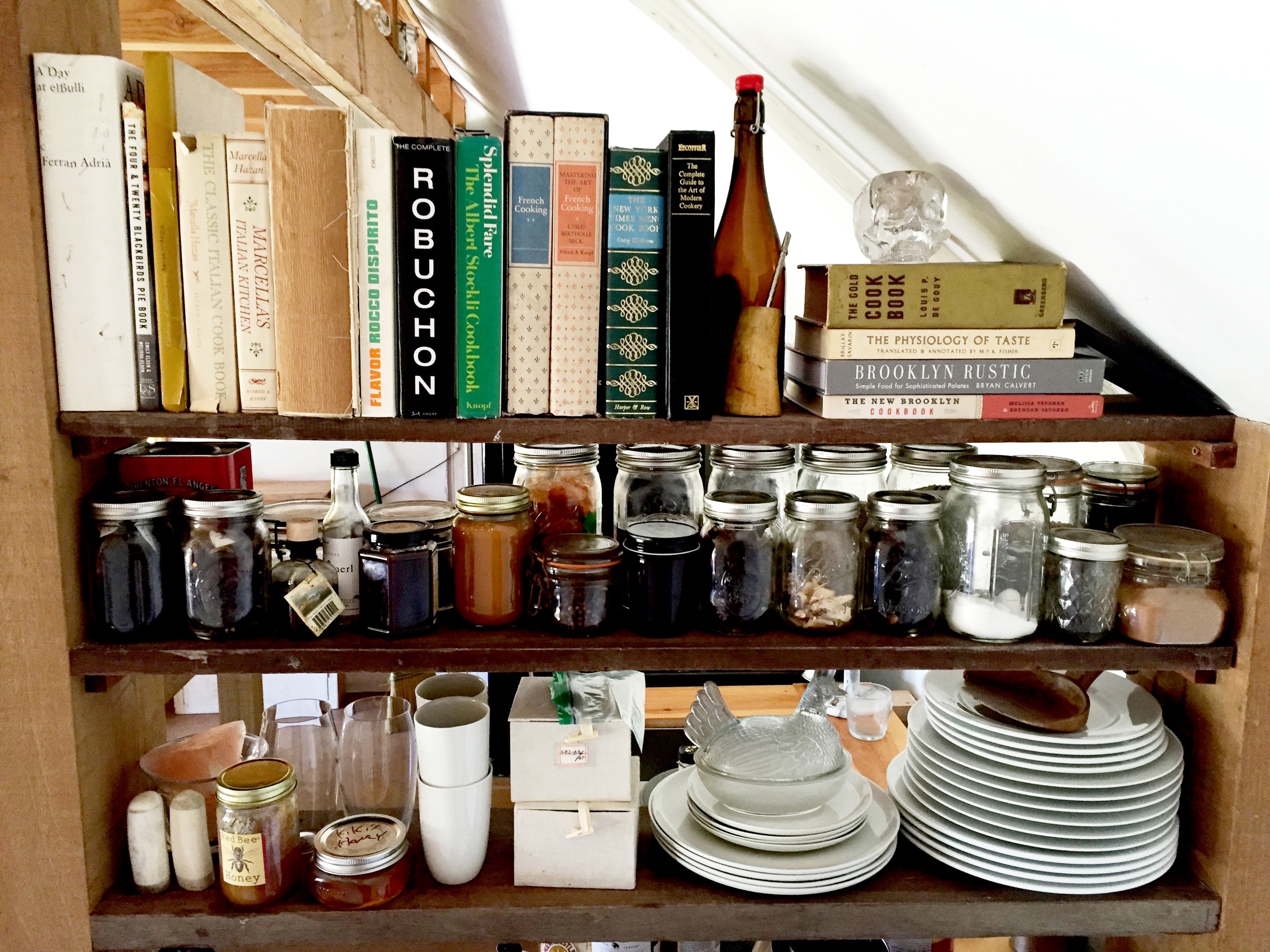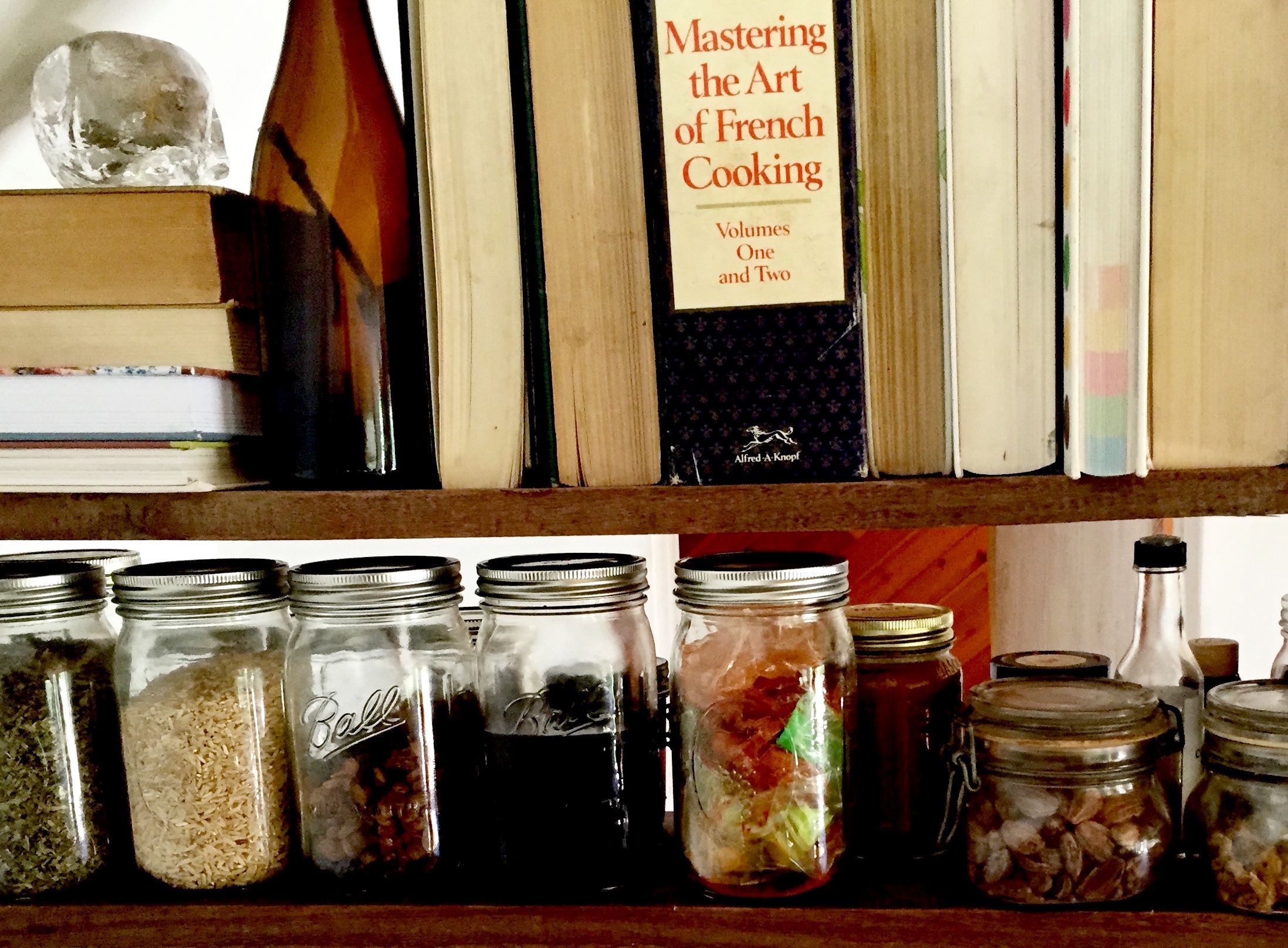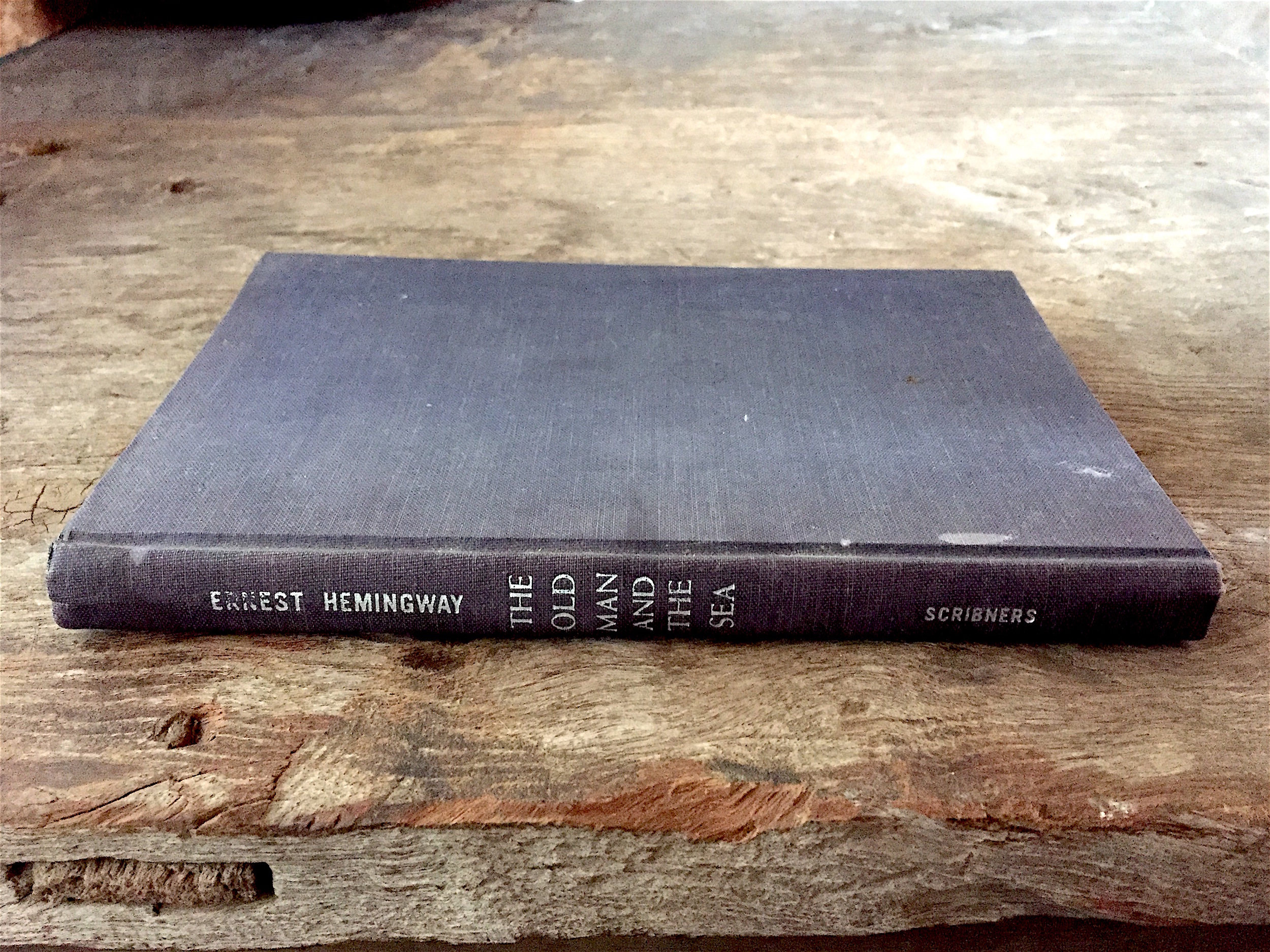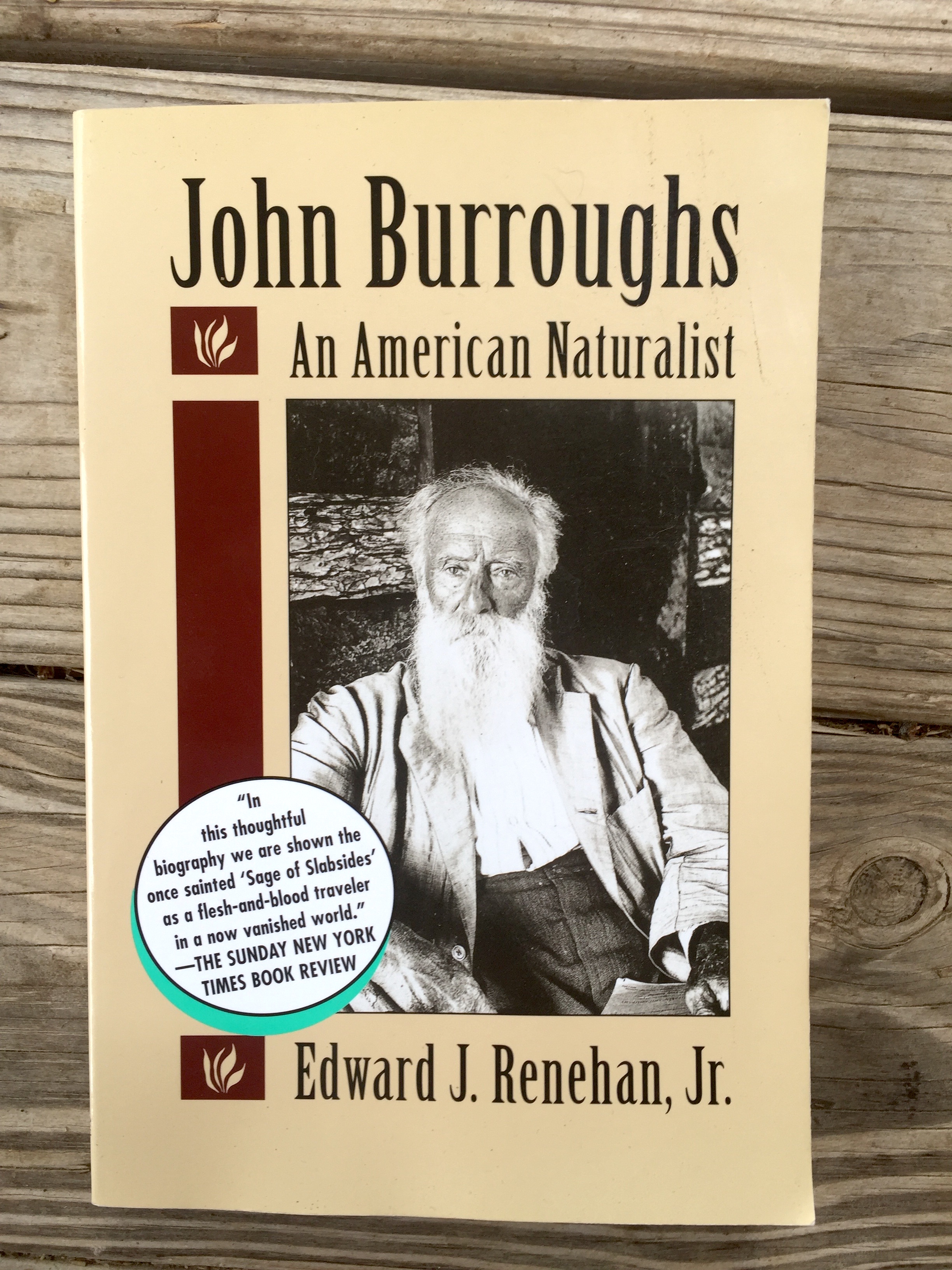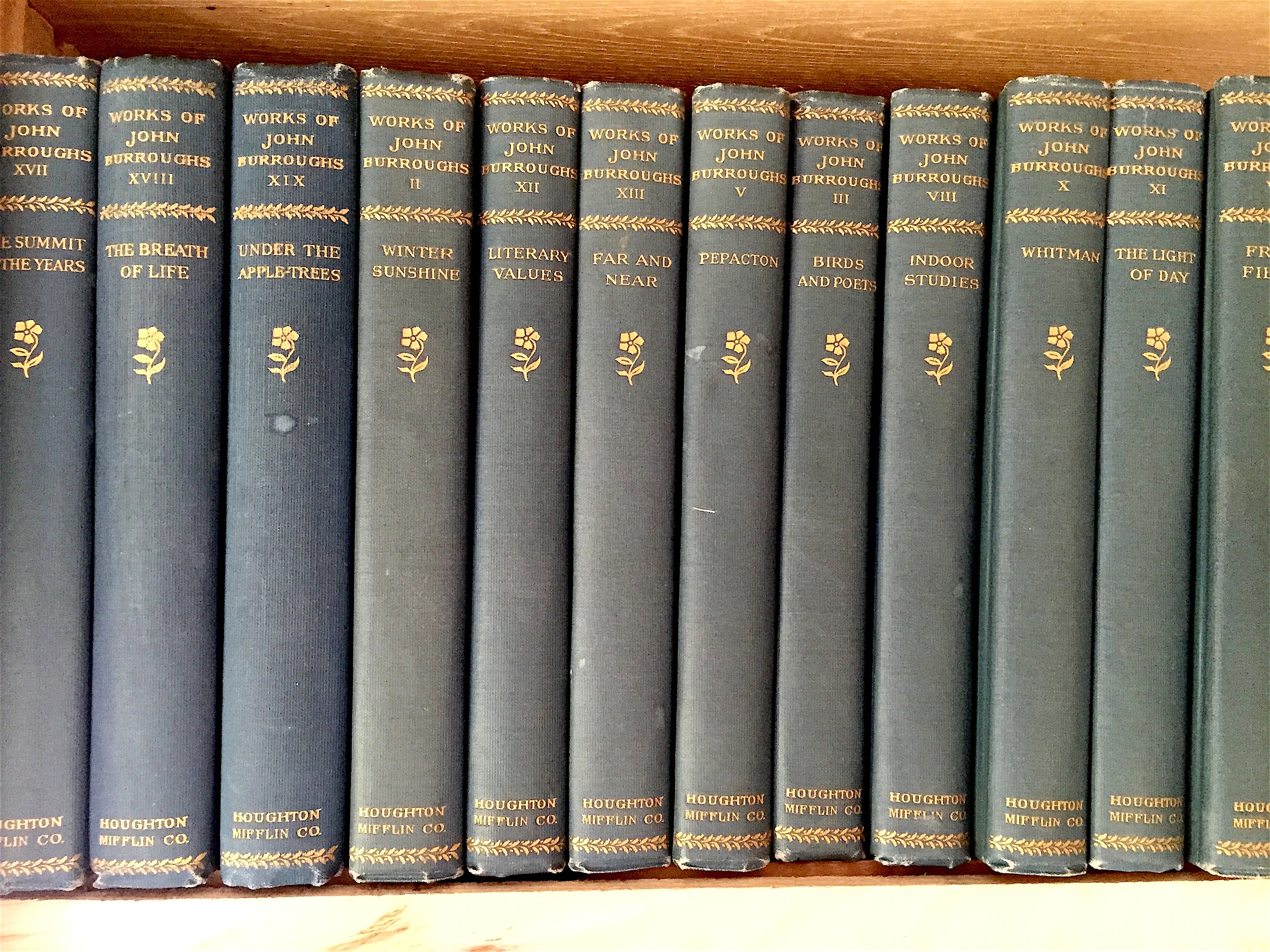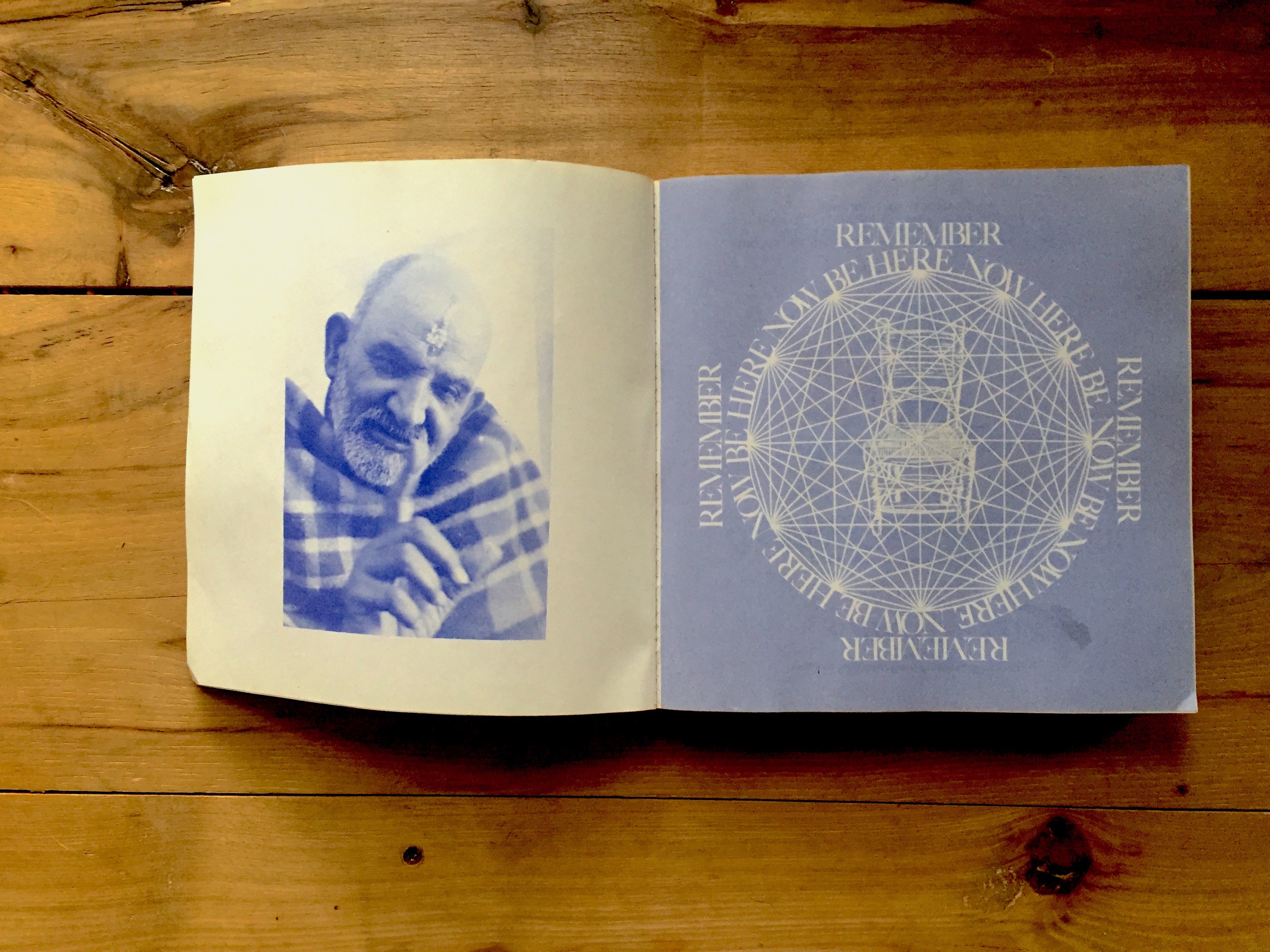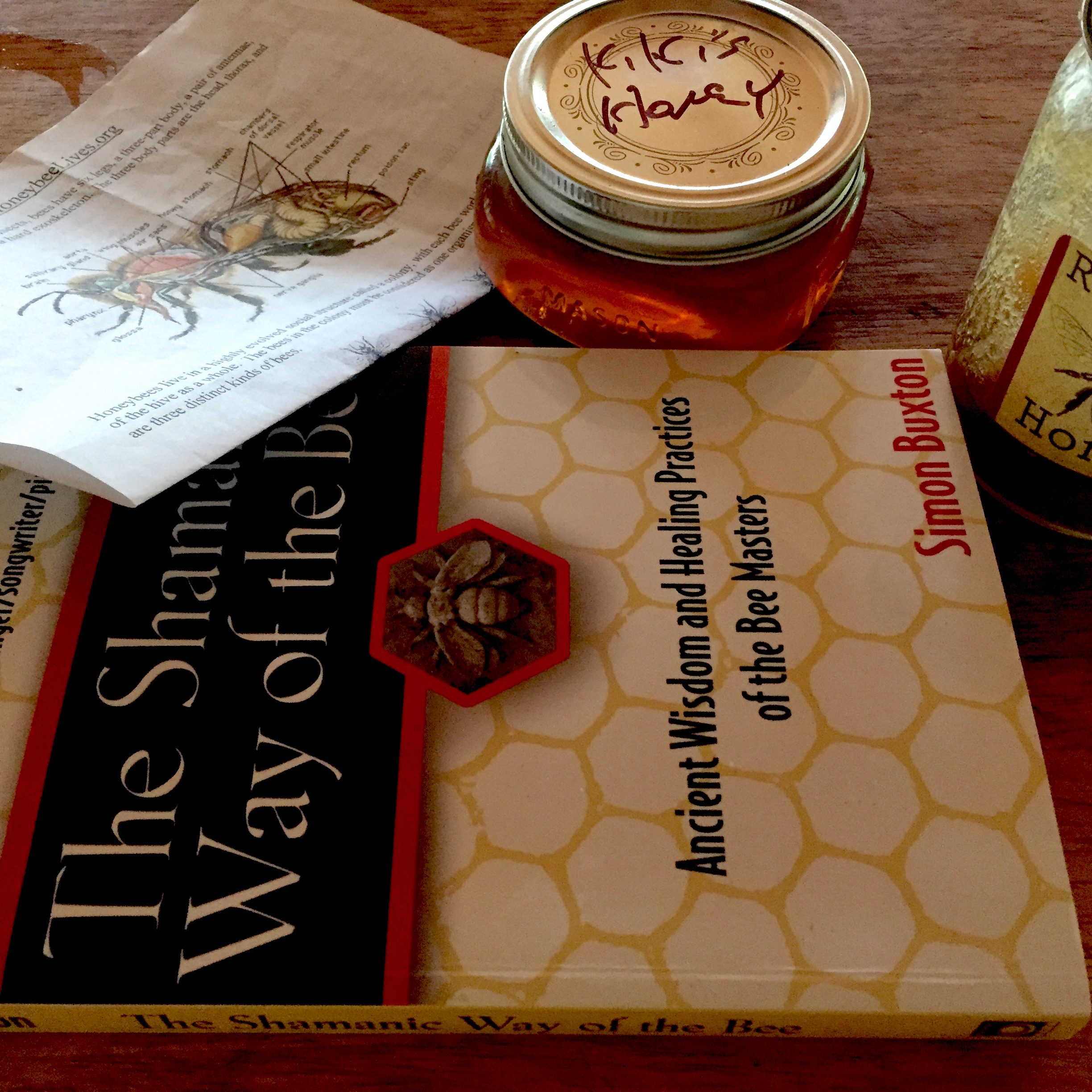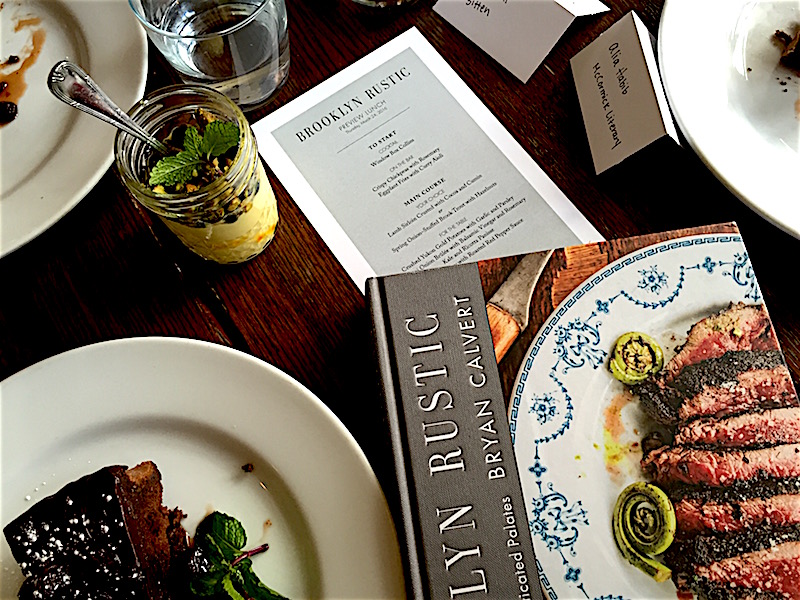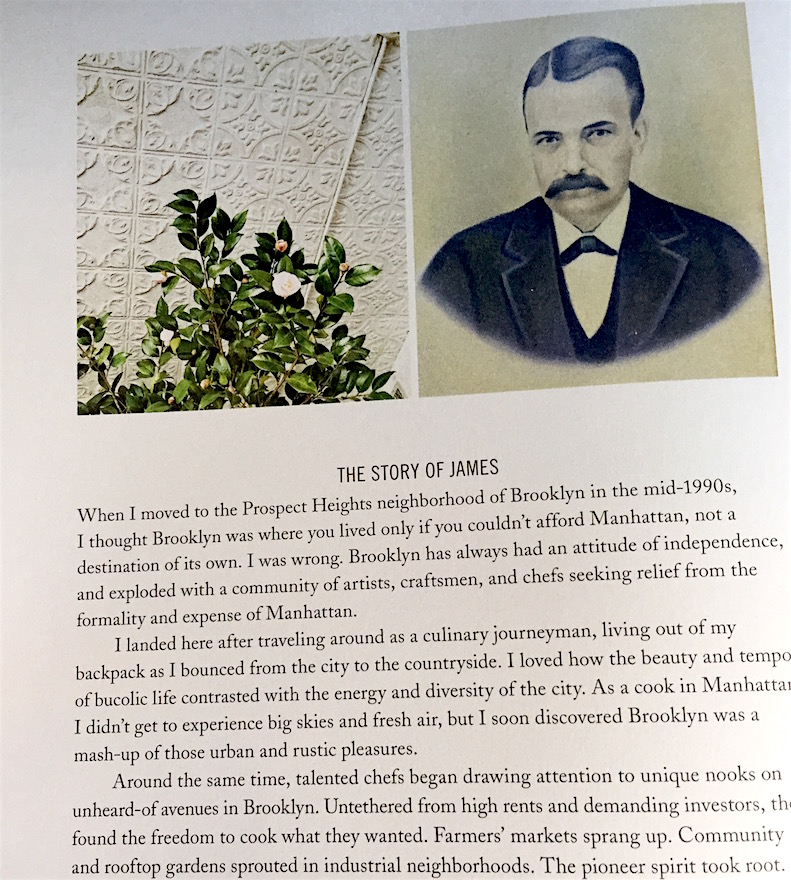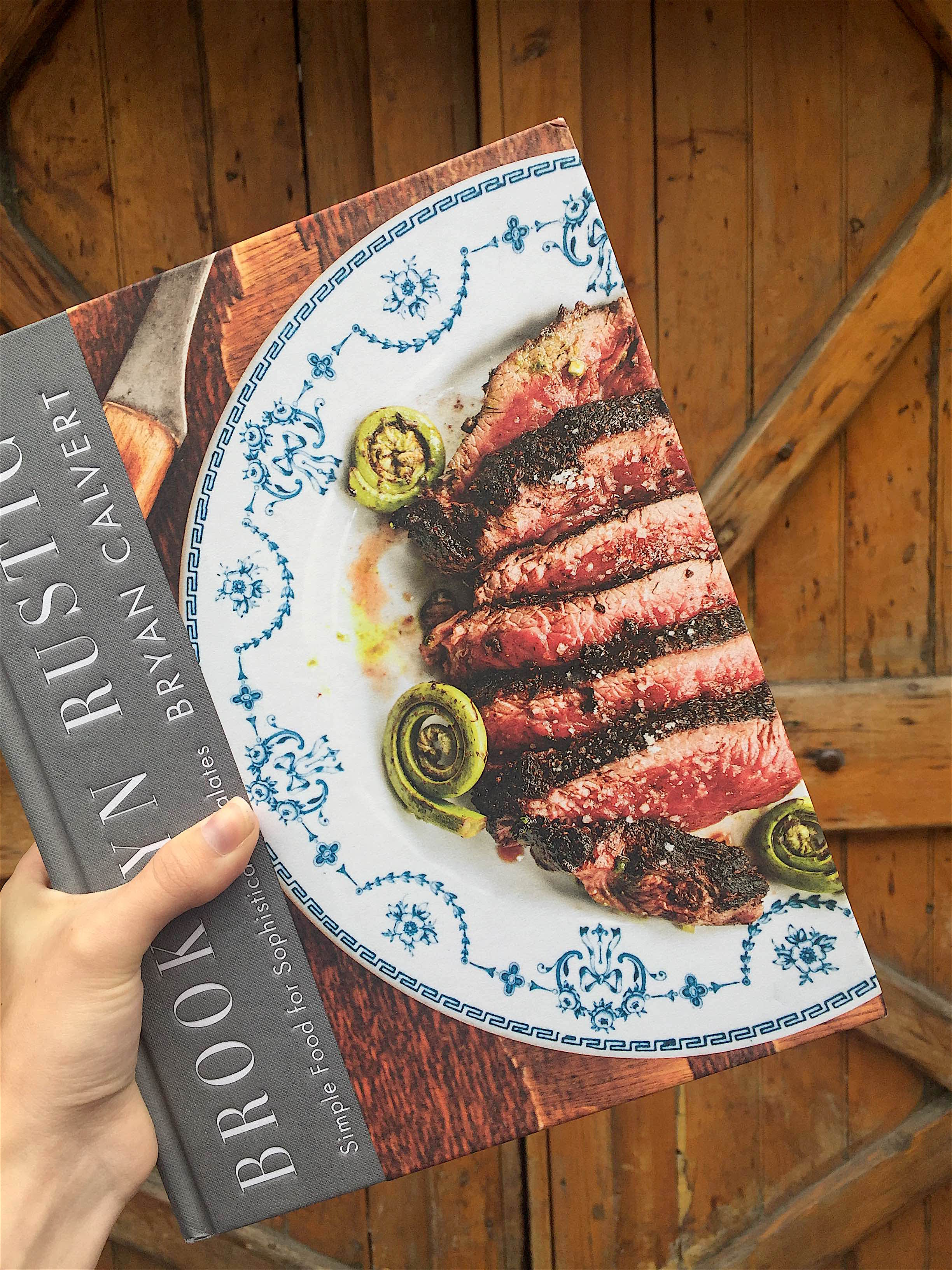A BOOKSHELF ODYSSEY: BRYAN CALVERT'S
/By Katya Wachtel
When we reach chef Bryan Calvert by Skype at his home in upstate New York over summer, we hear the strumming of a guitar but the video connection is blank. When Calvert's voice filters through the garbled connection, we ask if it was he we heard playing? "If it sounded really good, it was probably Willie Nelson. If it wasn't, it was probably me," he says, laughing.
Calvert is the co-founder of James, a warm and stylish farm-to-table eatery in a century-old brownstone in Prospect Heights, Brooklyn. With James, which he opened in 2008, Calvert was an early pioneer of the type of seasonally-focused, locally-sourced produce that has come to define Brooklyn's food and dining scene. Before James, Calvert worked for top New York restaurants Bouley and Union Pacific, and also had a stint as a personal chef for Susan Sontag and Annie Leibovitz.
In his review of James the year it opened, Frank Bruni (then-New York Times chief restaurant critic) wrote: "It’s also an example of how quietly sophisticated the food at restaurants fashioned as affordable neighborhood bistros has become. No bigger, brasher restaurant around town served me an heirloom tomato salad this summer that I enjoyed any more than one at James."
Eight years later, Calvert has put that recipe and a trove of others into his first cookbook, Brooklyn Rustic (Little Brown), showcasing his brand of refined, contemporary American cooking with meals built around seasonal produce and quality staple ingredients. It's filled with delicious recipes and thoughtful but practical essays for the urban home cook, ranging from how to cut and preserve your own herbs to trusting your palate, to anecdotes that tell the story of Brooklyn's food evolution (such as his reluctance years ago to put a kale salad on the menu even though his business partner assured him the bitter, leafy green, "would be huge.")
We first met Calvert at James for a preview of Brooklyn Rustic and some of its mouth-watering recipes - Eggplant Fries with Curry Aioli; Lamb Sirloin Crusted with Cocoa and Cumin; Kale and Ricotta Panisse. Calvert is a real history buff, and talked about the restaurant’s namesake – his great-grandfather James – who was a cook in New York at the turn of the 20th century. We recently caught up with Calvert again, this time by Skype, to talk about cookbooks, homemade furniture, and the literary classics to which he turns when he’s not ensconced in historical detective work.
*****
Literary Show Project: Books and literature must have been on your mind lately, since you've been going through a bookshelf odyssey of your own. Tell us about your new shelves.
Bryan Calvert: It's a work in progress. I have this cabin I'm working on and it's going to take a long time to get it finished. I have two bookshelves. One is behind me. I built that out of Appalachian Hickory, which is from my friend's property – the floorboards. I took scraps out of it. It's beautiful wood. You can't buy wood like that in a store. It's totally imperfect. It's knotted; it's gnarly. It's hard wood to work with. I'm kind of a scavenger. I believe in found art and there's so much out there you can find if you make the time. I'm not a skilled carpenter but I find a lot more value in trying to make my own stuff when I can. Even the restaurant kitchen -- I built a lot of the stuff myself. I wouldn't call it quality craftsmanship, but it's functional.
LSP: Those bookshelves are upright, so you must be doing something right. Let's talk about your books. You're a chef; you've just released your own cookbook. Can you remember the first cookbook you bought, or which you were given, and do you still have it?
BC: The first one that was given to me as a gift -- that I can remember -- was when I was in high school and I worked at this little gourmet shop in New Jersey, in the suburbs, in 1985. It was pretty much my first cooking job and the owners were really nice people and really encouraged me to pursue cooking. I started as a dishwasher there and then as a pastry chef, and then a hot chef. The book they gave me was by Paul Bocuse -- Bocuse: A La Carte. I still have it.
"I'm not really a cookbook collector. I don't use them a lot. I use them for inspiration... but as a chef you don't really read recipes."
LSP: And are there any others that are particularly special? That really mean something to you?
BC: The shelf that has the cookbooks on it is the shelf I'm building in the kitchen, and it's funny because I'm not really a cookbook collector. I don't use them a lot. I use them for inspiration and guidance but as a chef you don't really read recipes. Except for baking -- baking is the only place I would do that because it's more exact. When I wrote my cookbook it was interesting, not being a recipe follower. A lot of chefs work like that. It gets to a certain point in your career when you understand the language. So, it’s like if you listen to a riff in music, and you think, ‘I really like this riff,’ and figuring out the riff and then taking that riff and doing your own thing with it.
LSP: Are there any books that you do go back to though, for that inspiration?
BC: Yeah, they're all classical books and they're the ones that are on that shelf. Escoffier -- there's different adaptations of it but I think the first one was written in the 1900s. [Auguste] Escoffier was the first one to write a cookbook in that kind of format. It's the bible at culinary school. I come up with these ideas and I think they're brilliant and you go to Escoffier and it's in there in one way or another. And then there's Larousse Gatronomique. Those are the two books that when you go into culinary school – you live by. It might be different now, but they're classic French cookery. Larousse is like an encyclopaedia of French cookery. So you'd be like, ‘I don't know what Duck à l'Orange is.’ So you'd look it up and it would tell you what it is and the history. There's a lot of historical value in those books.
LSP: Are there any cookbooks you picked up recently you thought were really great? Something more contemporary?
BC: Definitely. I like The Pie Book by the girls at Four & Twenty Blackbird in Brooklyn. It's really cool. It just made pies really sexy.
SKYPE DISCONNECTS. SKYPE RECONNECTS.
LSP: Ah, we're back. Sorry, it just cut out.
BC: I live in the middle of nowhere. I'm surprised we even got this far.
LSP: You're in upstate New York now, but for a while you lived above the restaurant in Brooklyn, didn't you?
BC: I lived above the restaurant for five years. Now I live upstate. I go back to Brooklyn all the time. The restaurant's been open for eight years now so fortunately I don't have to be there on a daily basis. Let's just say I've embraced the rustic lifestyle! I'm more of a hermit at this point. I grow food up here for the restaurant. I just bought this place in December. It's a little tiny cabin. There are blueberries coming in, rhubarb, strawberry, some lettuces. A few pear trees are coming in. I'm starting to forage wild mushrooms. I'm starting to learn about that. It's a little tricky, you have to be careful.
"I'm definitely not a magazine guy. And I gave up newspapers also. I read books to learn about what's around me, the environment and history."
LSP: For foraging do you have a book or a catalogue that you use to know what's okay to eat?
BC: There's a few books. The one for wild mushrooms is the Audubon Society Book. I also have a book called Farming the Woods. I took a workshop with one of the authors, Steve Gabriel -- he runs the Finger Lakes Permaculture Institute. I'm really interested in permaculture and modern ways of farming that embrace the natural environment and ecology without destroying it. We're taking the wrong approach completely, in my opinion, with industrial agriculture. We feed a lot of people and it's great but [those systems] are starting to fail. It's not going to work long-term. So we have to find a way to do it in a symbiotic relationship with the environment around us. It's not easy with the population we have.
LSP: When you do go into the city, are you reading books on the train? Or you drive?
BC: No, I drive. I bought a hybrid for that reason. I listen to NPR. And music.
LSP: Let's talk about non-cookbooks. What do you read in your downtime? Are you a magazine guy?
BC: I'm definitely not a magazine guy. And I gave up newspapers also. I read books, historical books. I read books to learn about what's around me, the environment and history. I think people today have no understanding of the history of the community they live in. I think it’s really important. One reason I named the restaurant James is because James is my great-grandfather who was a chef at the turn of the century, about the same time the restaurant was built in the 1890s. If you take the time to research, it makes your life richer and more connected to the whole community and the whole process of progress and civilization. The same with food and farming. Where does it come from? What's the history?
LSP: Can you name a couple of your favorite historical books about New York City, or the area you're in now?
BC: There's a lot of great books about New York in general. Gotham: A History of New York is amazing. It goes up to 1898 and starts in the 1500s. Wall Street was called Wall Street because a wall was built to keep wild pigs from ravaging the settlement. Weird things like that. Another book is The Island in the Centre of the World. They're the two books I like a lot, and you can read them over and over again.
I still read a lot about Brooklyn. There's so much cultural and environmental history there and people just walk by these beautiful buildings and don't really understand the story behind it. I've been spending a lot of time reading about the history of where I live now, which is Andes, New York. This area has always fed New York City, starting with the bluestone quarries here -- that’s what the sidewalks are made of in New York. The bluestone has been there for a century or two and it comes from the quarries up here and was sent down the Hudson River.
"I like the classics a lot. I like when we question our own humanity and our own progress."
LSP: So you're reading a lot more non-fiction these days, rather than novels?
BC: I read some fiction. I tend to go to the classics for fiction. There are some more modern ones. I just read Shantaram, which I really liked. I've been reading a lot of John Burroughs because he grew up around here, in Roxbury. He was a naturalist writer; friends with Walt Whitman. His biography is really funny. He was a very flamboyant man who worked in the hospital during the Civil War and would bring food and gifts to the Civil War veterans that were injured, whether they were Confederate or Union. Whitman and Burroughs partied pretty hard at John Burroughs' place and Ursula Burroughs was kind of conservative and hated the whole thing. They had this bohemian thing going on.
LSP: Let's get back to those classics you were talking about. Which ones are your favorites?
BC: Heart of Darkness by Conrad. I read it all the time. I can never get enough of it.
LSP: When did you first come across it?
BC: Probably in high school, in English class. I like the classics a lot. I like when we question our own humanity and our own progress and I think that book does that. Conrad's story is that he was a sailor. He started writing, but it wasn't part of his career. He became this amazing English writer even though he was from Poland. He was a sailor too, and I worked in the merchant marines for a while after high school. I liked the perspective of [Heart of Darkness]. I like Hemingway too - Old Man and the Sea. He’s very masculine. The writing is so exact and curt and simple but still rich.
LSP: Your copy of Heart of Darkness, is that one you've had for years?
BC: It's pretty old. This is from 1978.
LSP: Which book is on your nightstand right now?
BC: The Shamanic Way of the Bee. I want to start a hive here and there's this whole bee culture: the way native American Indians dealt with it, and different cultures. I didn't know that. So when I started researching... There is this whole spiritual part of the hive, this connection. Some of it is pretty funky. I'm not going to go that route. It’s all based on traditional shamanism. It's thousands of years old.
I like some of these spirituality-based books. I like looking at the world from a different point of view; a more spiritual point of view. It’s in my cookbook – if you look for it – without being too obvious. It's about being connected to your surroundings. Whether it’s through the history of your neighborhood or knowing where your food comes from. LSP
BROOKLYN RUSTIC: SIMPLE FOOD FOR SOPHISTICATED PALATES IS AVAILABLE IN BOOKSTORES AND ONLINE
